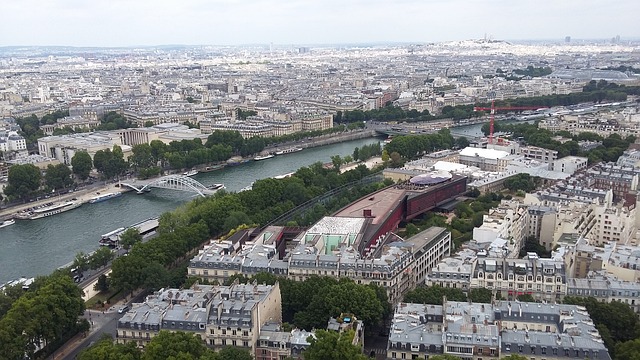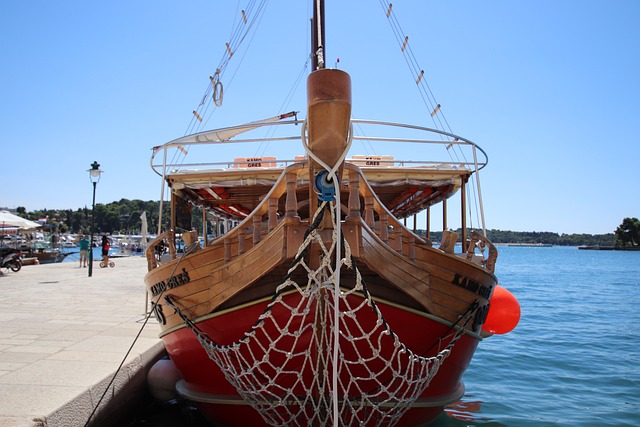The Global Language of Tour Guides: Bridging Cultures Through Travel
In an increasingly interconnected world, travel has become more than an exploration of new landscapes and cuisines; it is a journey into diverse cultures, traditions, and histories. At the heart of this experience lie the tour guides, the unsung heroes who bridge the gap between different cultures and make the rich tapestry of global human experience accessible to travelers from all walks of life. The global language of tour guides transcends words; it is embodied in gestures, expressions, and shared enthusiasm, all of which serve to enhance the understanding and appreciation of each unique destination.
The Role of Tour Guides in Cultural Exchange
Tour guides are the cultural ambassadors of their regions, presenting a unique perspective that enables tourists to gain insight into local customs and traditions. Often, the connection a traveler feels to a foreign place is facilitated by the tour guide’s ability to narrate stories that capture the essence of the location. This storytelling extends beyond factual history to include local folklore, anecdotes, and the colorful lives of the inhabitants. By sharing these narratives, tour guides nurture an environment of understanding and empathy.
Language as a Tool for Connection
The verbal nature of tour guiding means that language plays a pivotal role in establishing rapport. Tour guides often speak multiple languages, which allows them to cater to a diverse clientele. However, the effective communication of ideas doesn’t solely depend on the spoken word. A skilled tour guide employs a variety of linguistic techniques to engage their audience. The use of local slang, humor, and emotional storytelling not only conveys information but also makes visitors feel welcomed and connected.
The multilingual capabilities of tour guides bridge language barriers that could otherwise hinder a travel experience. Imagine a traveler exploring the ancient ruins of a long-lost civilization without the guiding presence of someone who can elucidate the significance of each artifact. The absence of a fluent guide can transform a rich historical experience into a series of disconnected sights, leaving the traveler feeling disoriented and unfulfilled.
Non-Verbal Communication: Gestures and Expressions
While language is essential, non-verbal communication often plays an equally crucial role. A simple smile or a warm gesture can create an instant bond between a guide and their group. Tour guides harness body language to convey enthusiasm, understanding, and reassurance. The way a guide interacts with their surroundings—pointing to significant landmarks, mimicking local customs, or even sharing a dance—can pull travelers into the cultural tapestry of a place.
Furthermore, non-verbal cues can help tourists navigate unfamiliar environments. For instance, a guide might demonstrate local etiquette, such as proper greetings or dress codes, through gestures that speak louder than words. This hands-on approach not only teaches visitors about cultural norms but also encourages them to embrace these practices during their stay.
Emotional Connection: The Heartbeat of Tours
The best tour guides have an innate ability to connect emotionally with their guests. They often share personal anecdotes about their own experiences living in, and learning from, their culture. This emotional transparency fosters a connection that resonates with travelers, allowing them to relate to the guide on a personal level. When guides weave their life stories into their narratives, they humanize the experience, and travelers feel as though they are part of something larger—a shared journey of discovery.
In this way, the role of the tour guide expands beyond mere presentation. They become facilitators of experiences, enabling deeper interactions between travelers and the destinations they visit. This connection is especially important in regions where tourists may be burdened by stereotypes or preconceived notions about the local culture. A knowledgeable and emotionally intelligent guide challenges these misconceptions, showcasing the richness of their culture and instilling respect and appreciation in their audience.
Mutual Learning: A Two-Way Street
The relationship between tour guides and travelers is often one of mutual learning. Tour guides not only share their knowledge and expertise but also gain insights from the questions, experiences, and backgrounds of their guests. This exchange of ideas furthers understanding and promotes cultural exchange, creating a dynamic dialogue that benefits both parties.
Tourists may come from diverse backgrounds, each bringing their own perspectives and stories. A guide who listens actively and engages with their group will discover a wealth of knowledge that can enhance their own understanding of their culture. This shared interaction can lead to a richer experience for everyone involved, transforming the tour into a collaborative exploration of life and culture.
The Impact of Technology on Tour Guiding
As technology continues to reshape the travel industry, tour guides are also adapting to changes like digital platforms and social media. Today, many guides use technology to enhance the travel experience, creating virtual tours, podcasts, and online content that reach a broader audience. This not only expands the wisdom of a guide’s unique perspective but also allows travelers to engage with a global community of explorers before and after their actual journeys.
Such adaptations bridge the gap between cultures by providing a digital medium for sharing knowledge. Travelers can access stories, tips, and cultural insights at any time, paving the way for a deeper understanding before embarking on their journeys. Additionally, technology allows guides to remain connected with their clients, creating an ongoing virtual relationship that can encourage future travel or even inspire travelers to tell their own stories.
Training and Development of Tour Guides
The significance of the tour guide profession cannot be overstated, yet it is essential to recognize the training and development that guides undergo. Many regions have established formal training programs that equip guides with skills ranging from historical knowledge to communication and interpersonal techniques.
Effective training emphasizes not only the facts and figures of a destination but cultivates emotional intelligence, ensuring that guides can connect with diverse groups. The best tour guides are those who are continuously learning, whether through self-study or peer collaboration, allowing them to stay updated on cultural trends and historical accuracy.
Challenges Faced by Tour Guides
Despite their crucial role, tour guides often face numerous challenges in their line of work. Fluctuating tourism seasons can lead to inconsistent income, and the pressure to maintain high standards while dealing with large groups can be overwhelming. Additionally, some regions may encounter negative stereotypes or preconceived notions that affect travelers’ attitudes towards the local culture.
Amid these challenges, tour guides strive to deliver excellence. Many work to overcome obstacles by continually enhancing their knowledge and skills. They often advocate for their community, promoting sustainable tourism and respectful interaction with local cultures. These efforts ensure that travelers not only enjoy their experiences but also contribute positively to the regions they explore.
The Future of Tour Guiding: An Evolving Landscape
The future of tour guiding is rife with possibilities as the industry adapts to changing travel trends and emerging technologies. Eco-tourism and sustainable travel are gaining traction, pushing guides to incorporate ethical practices into their tours. Guides are now tasked with educating travelers about responsible tourism and local conservation efforts, emphasizing the importance of preserving cultural and ecological heritage.
In a world where travelers seek more meaningful experiences, tour guides will continue to play an indispensable role. Their unique ability to connect people and cultures will remain vital, as the thirst for exploration and understanding deepens. The future may also see the rise of virtual tours and digital guides, yet the irreplaceable charm of a live, enthusiastic guide will continue to bridge cultures in ways that technology cannot.
Conclusion: Building Bridges Through the Language of Tourism
Tour guides are far more than direction-givers; they are storytellers, educators, and cultural ambassadors. The global language of tour guides transcends verbal communication, encapsulating shared emotions, curiosity, and the desire for connection. Through their dedicated service, guides foster genuine interactions that unite travelers with the spirit of the places they visit.
As we venture forth into a world where cultures intersect more than ever, the role of tour guides in bridging gaps and deepening understanding becomes increasingly crucial. They are our guides into new worlds, fostering connections that echo long after the journey has concluded. Unsung yet profoundly impactful, tour guides illuminate the beauty of diversity and cultivate appreciation for our shared humanity—an invaluable contribution to the art of travel.


